By Nina Huang
NORTHWEST ASIAN WEEKLY
Have you tried crystal mooncakes or yuzu matcha mooncakes? This Mid-Autumn Festival, Seattle bakers are putting their own spin on the traditional pastry with new shapes, flavors, and colors.
In many Asian cultures, the Mid-Autumn Festival—celebrated this year on Oct. 6, the 15th day of the eighth lunar month—marks a time for reunion, gratitude, and togetherness under the brightest full moon of the year. Mooncakes, often round like the moon, symbolize wholeness and unity.
Traditionally, they’re golden with intricate designs, filled with lotus seed or red bean paste, and sometimes a salted egg yolk. But local bakers are honoring tradition while adding their own heritage and creativity.
A Malaysian touch
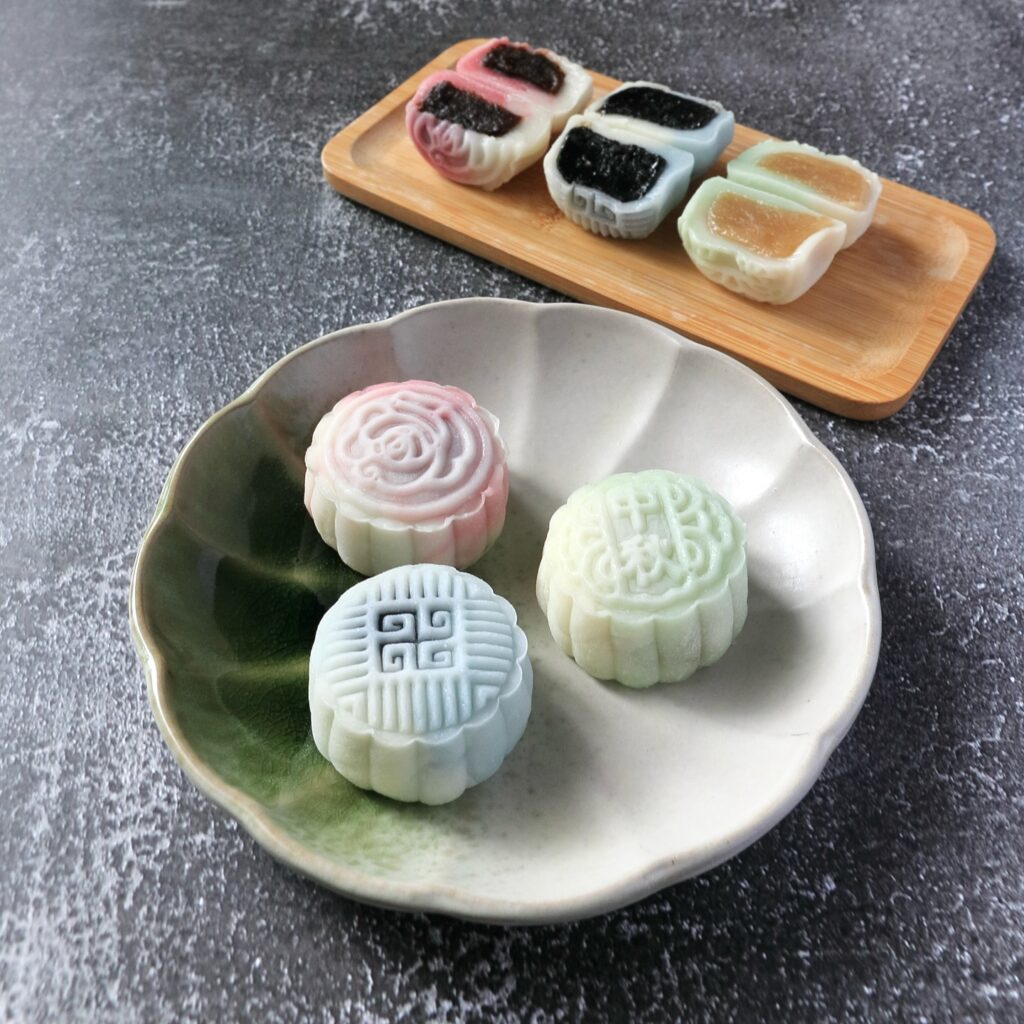
Photo courtesy of Cooking Auntie
Sook Yee Yap, the baker behind The Cooking Auntie, draws from her Chinese-Malaysian roots. Her snow skin mooncakes are naturally colored—green from pandan and blue from butterfly pea flowers—and filled with lotus, black sesame, or red date paste.
This year, she introduced a pineapple tart-inspired mooncake, a nod to Malaysia’s beloved Lunar New Year treats.
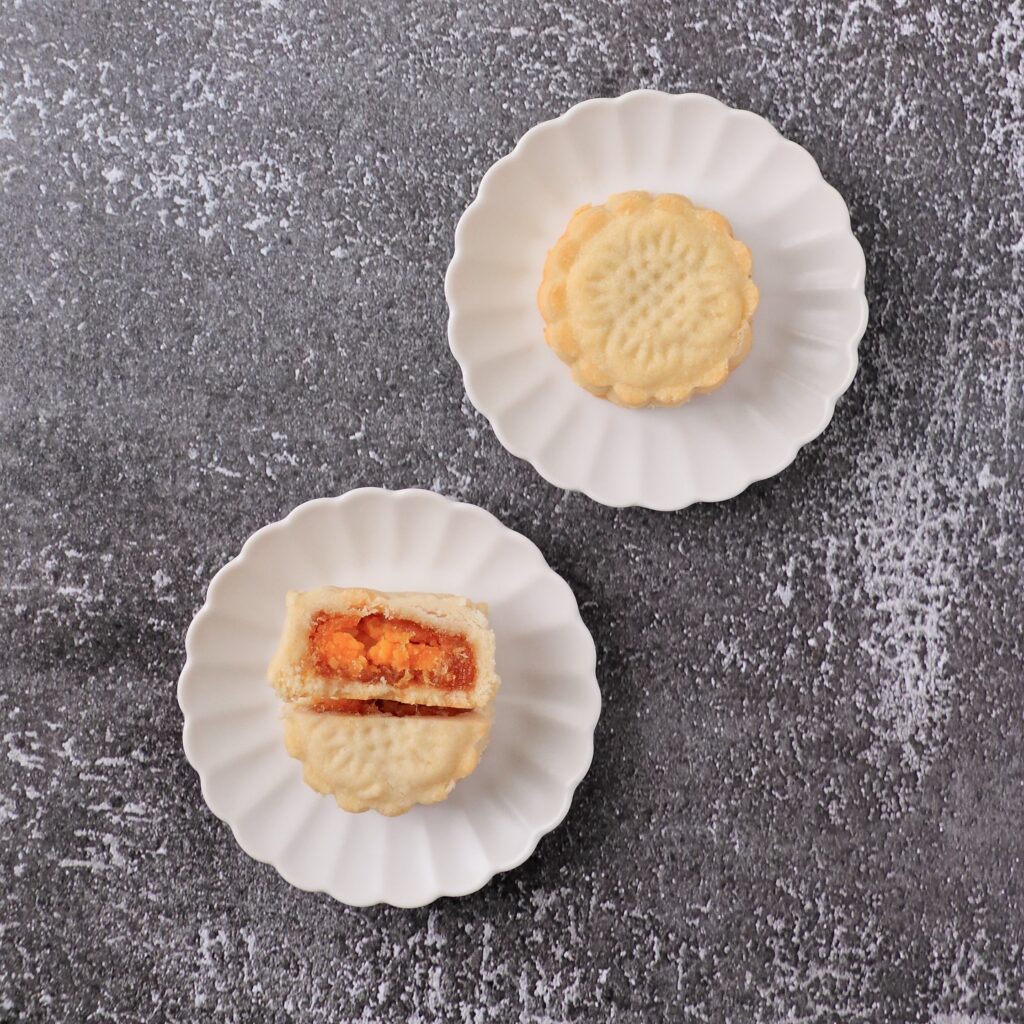
Photo courtesy of Cooking Auntie
“Commercial mooncakes now are all machine-made. Everything looks so perfectly shaped, almost plastic-like,” Yap said. “Small-batch, handmade mooncakes add that bit of TLC to the celebration. The imperfect imprint, the uneven edges—that’s a piece of the baker’s heart and soul.”
A family tradition
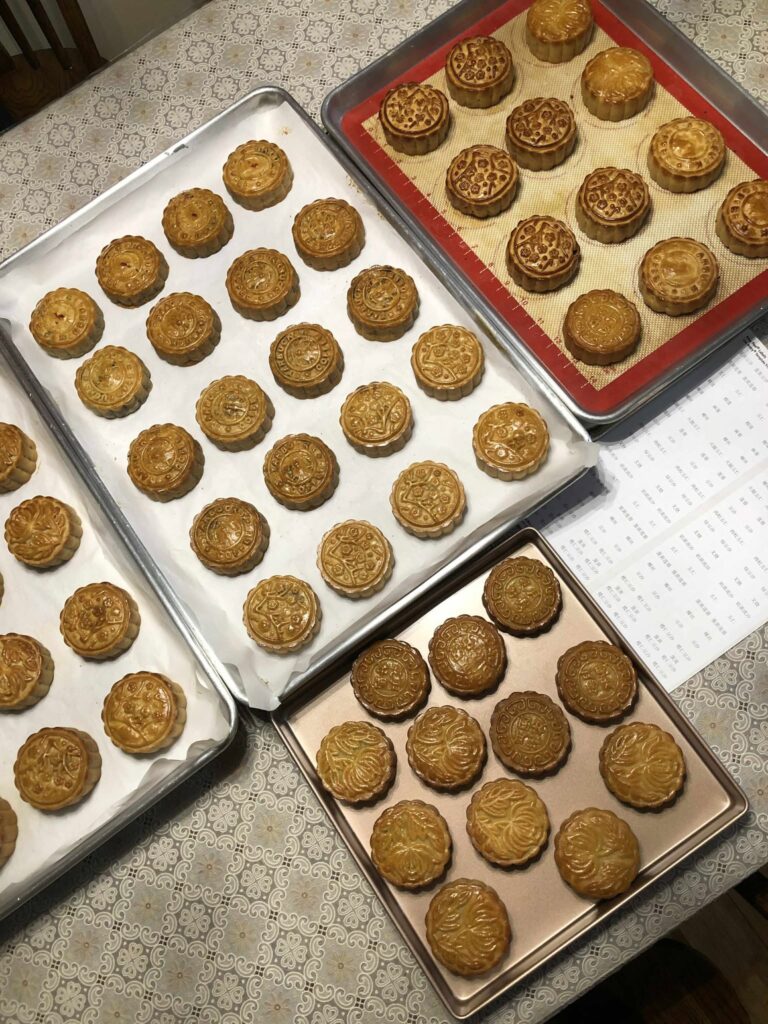
Traditional mooncakes (Photo courtesy of Sweet Dream Bakes)
For Cindy Yuong, owner of Sweet Dream Bakes, the festival is rooted in family.
“We make mooncakes together, share a feast, offer fruit to the moon, and then enjoy tea and mooncakes while gazing at the full moon,” she said.
Yuong has been baking mooncakes with her family for several years and wants to introduce them to more people this year—especially homemade ones. One of her specialties draws from her Vietnamese heritage: coconut filling.
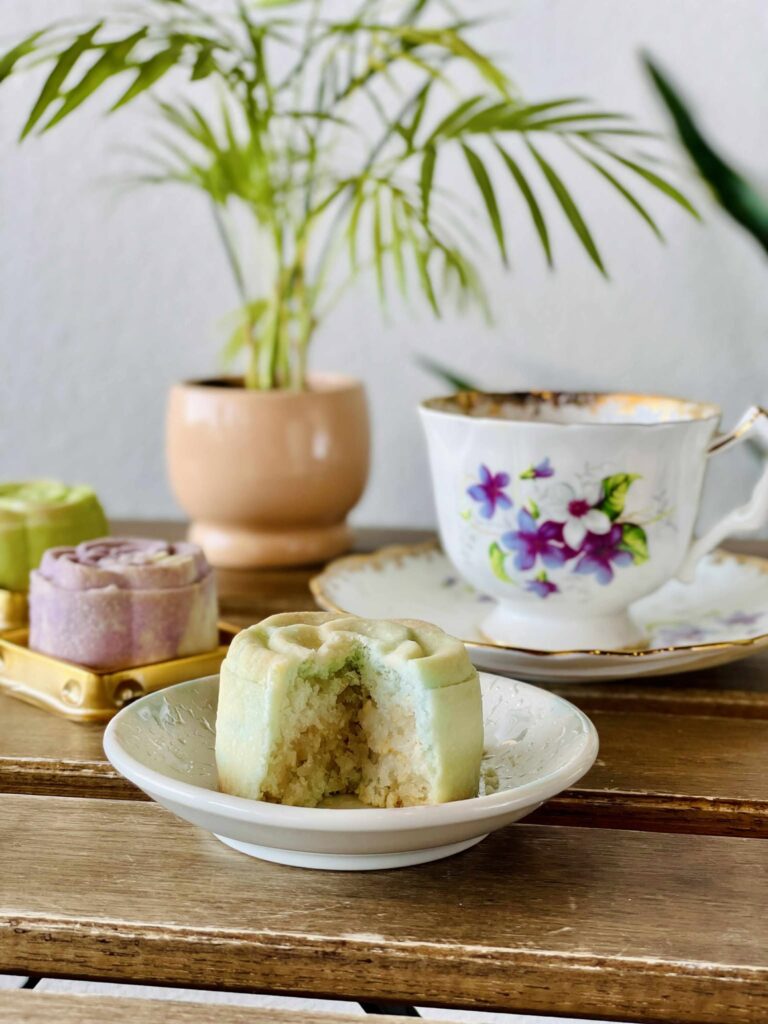
Coconut sesame (Photo courtesy of Sweet Dream Bakes)
“It’s not as pasty as the traditional lotus or red bean, and has a lighter texture,” she explained. She’s also making a toasty black sesame version, which she says tastes much better than store-bought.
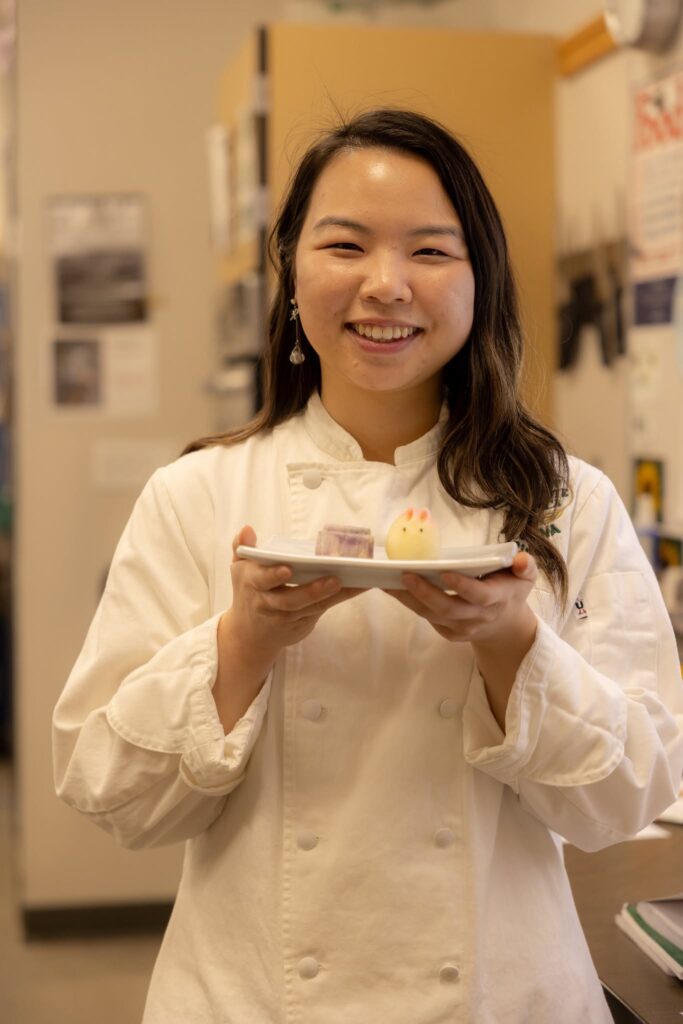
Cindy Yuong (Photo courtesy of Sweet Dream Bakes)
Her creativity doesn’t stop there. Instead of the dense, egg-washed crust, Yuong uses a buttery shortbread cookie crust that bakes up light and flaky—more approachable for people who might find traditional mooncakes too heavy. To make them visually pleasing, she marbles colors together and uses flower-shaped molds, turning each mooncake into an edible art piece.
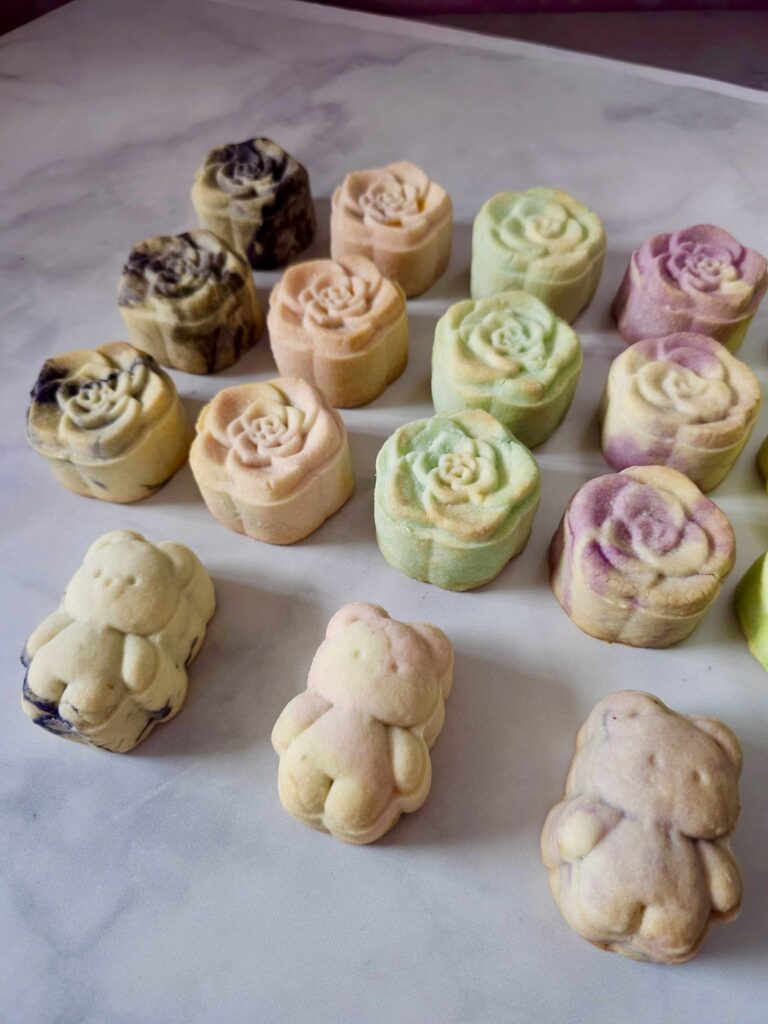
Photo courtesy of Sweet Dream Bakes
She’s also expanding her lineup this year with custom creations inspired by her clients and travels. A past request for Korean sweet potato mooncakes led her to keep that flavor in rotation. And on a trip to Japan, she picked up yuzu peel, which inspired her to combine it with matcha custard for a matcha-yuzu mooncake.
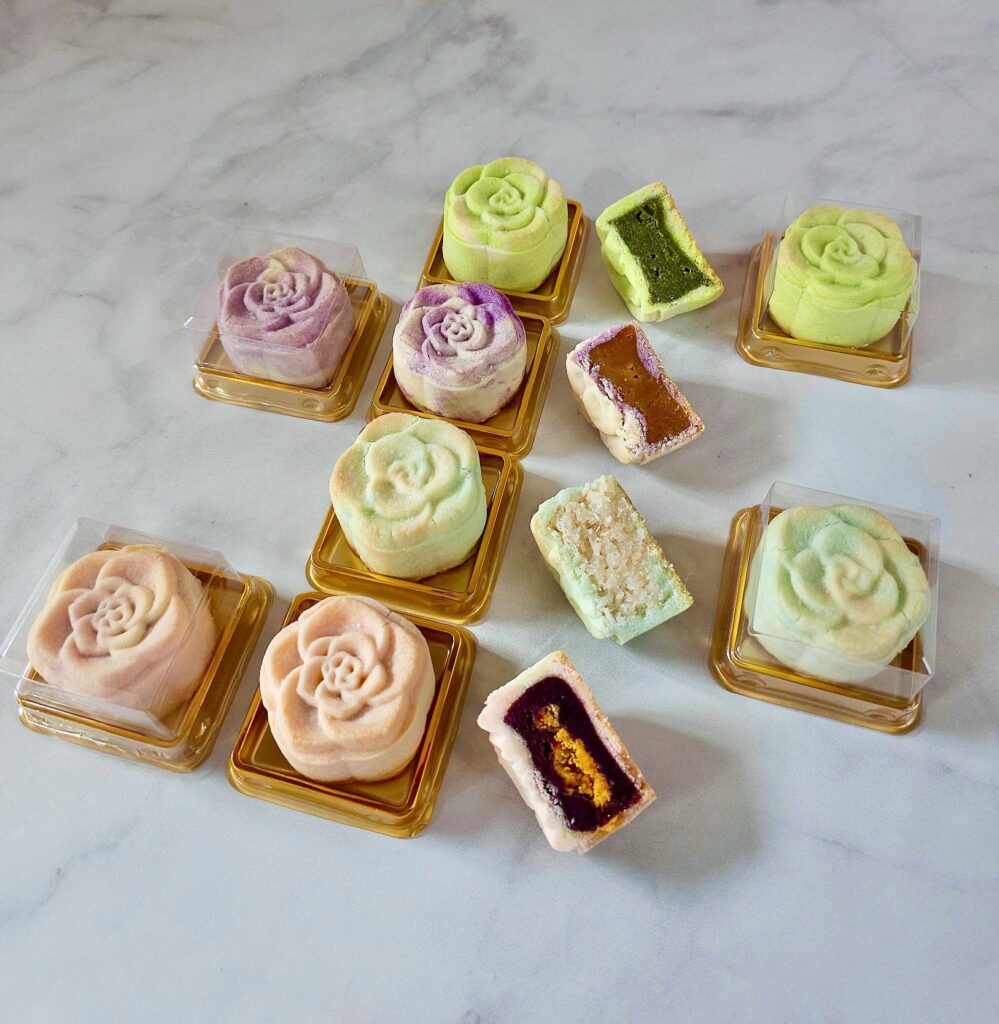
Photo courtesy of Sweet Dream Bakes
“The filling is a pastry cream-style custard, thick but fragrant with matcha and citrus from the yuzu,” she said.
For Yuong, mooncakes are best enjoyed with tea. She recommends pairing her creations with loose-leaf tea to balance the richness, but her family’s favorite is still pu-er, which they drink each year while celebrating under the moonlight.
Modern yet traditional
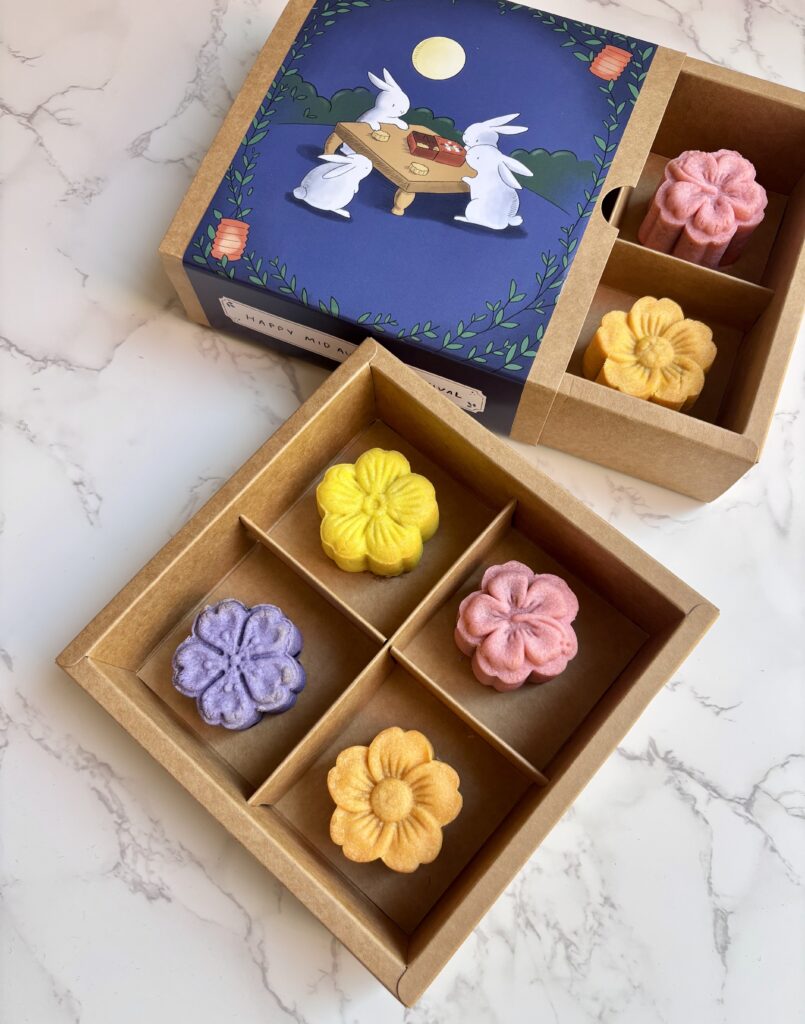
Photo courtesy of Kelly Miao
At Kemi Dessert Bar on Capitol Hill, owner Kelly Miao said mooncakes connect her more deeply with her Chinese (Shanghai and Wenzhou) roots.
“I’ve always respected the food traditions in my culture, so I absolutely had to make mooncakes,” Miao said.
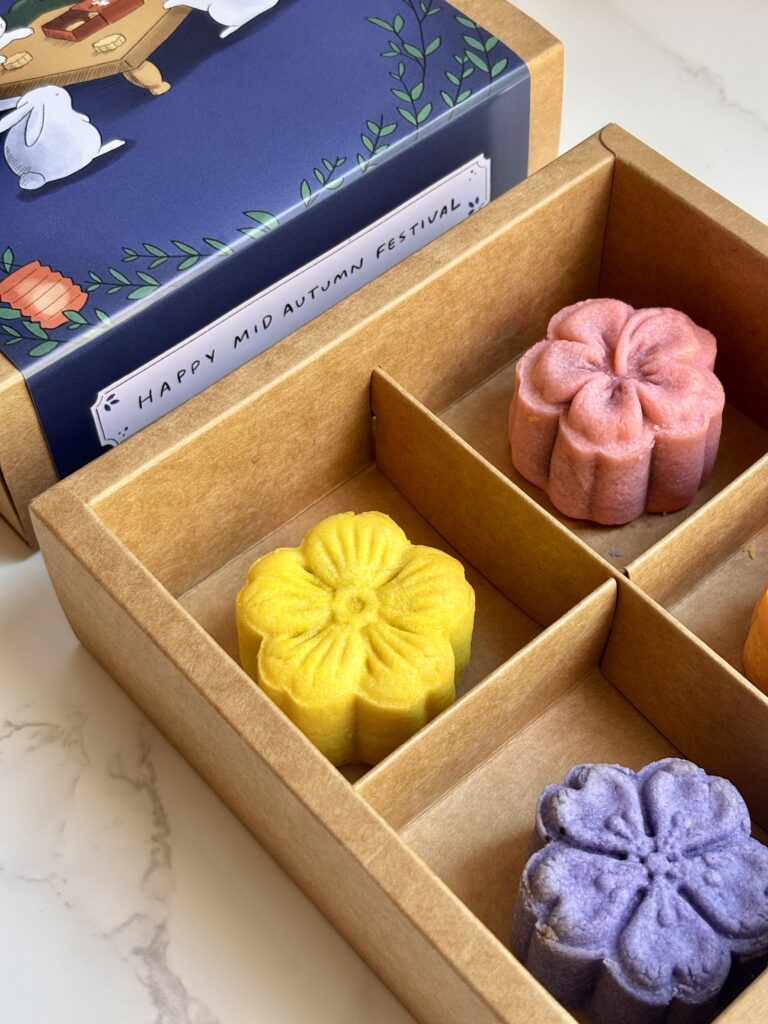
Photo courtesy of Kelly Miao
Her lineup includes traditional osmanthus lotus and black sesame mung bean, alongside playful creations like earl grey chocolate and blueberry yuzu.
Allergen-friendly mooncakes
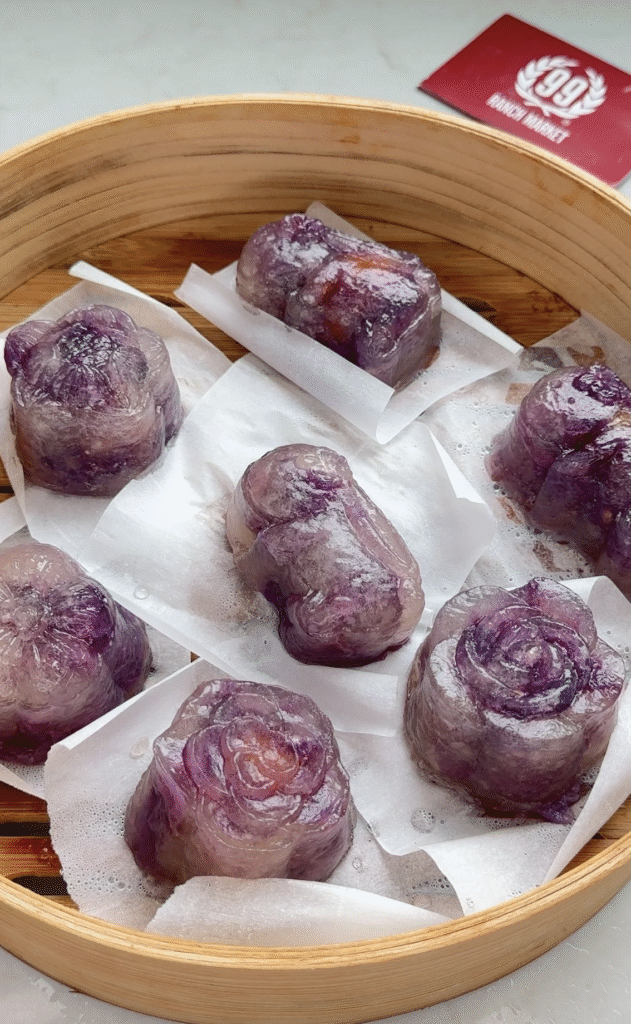
Crystal mooncakes (Photo courtesy of Kat Lieu)
Kat Lieu, founder of Subtle Asian Baking, features vegan and gluten-free mooncakes in her upcoming cookbook, “108 Asian Cookies.” Her crystal skin mooncakes use tapioca or sago pearls for a chewy, boba-like texture. Fillings range from roasted sweet potato to fresh fruit.
Each year, she celebrates with homemade mooncakes, dinner with family, and backyard moon-gazing with her kids.
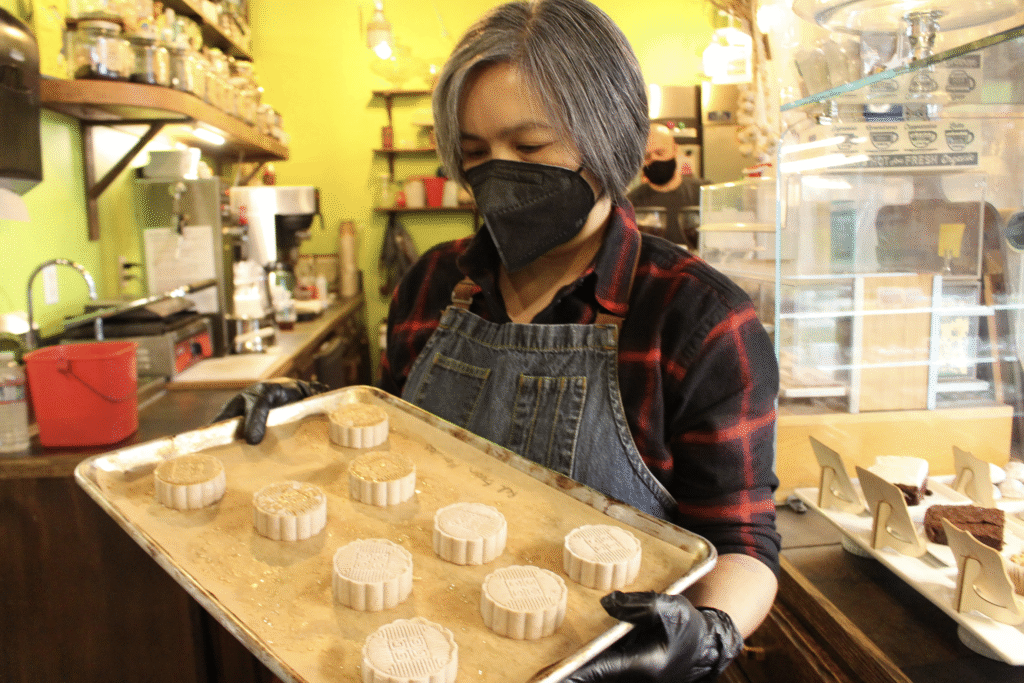
Photo courtesy of Sabra Boyd
In Belltown, Askatu Bakery also offers gluten-free, allergen-friendly mooncakes for both Mid-Autumn Festival and Lunar New Year. Owner Estela Martinez said visitors often tell her they may be the only bakery in the world making mooncakes free of the top nine allergens.
Celebrating one bite at a time
Whether traditional or reinvented, mooncakes from the greater Seattle region reflect the diverse communities—each baker adding their own story to a holiday centered on reunion and gratitude.
From classic lotus seed paste found at Asian groceries like 99 Ranch or Asian Family Market, to playful flavors such as yuzu or earl grey crated in home kitchens or local bakeries, mooncakes carry the same spirit—gathering under the full moon and celebrating togetherness, one bite at a time.
Nina can be reached at newstips@nwasianweekly.com.

